Crucial P310 1TB Gen4 NVMe M.2 2280 Review: The Longer Way
When Crucial announced a new M.2 2230 drive in July, we thought the new name would stick to its compact M.2 2230 form factor. Even as we reviewed our own sample a month later, we had no clue that the P310 label would be spreading to the larger and more common M.2 2280 layout. Yet here it is, and the one we received is also different from the drive we tested in an almost humorous way: At over twice the length, this 1TB model is half the capacity (and price).
| Crucial P310 1TB (CT1000P310SSD8) | |
| Form Factor | M.2 2280 |
| Capacity | 1.0TB |
| Interface | PCIe 4.0 x4 (NVMe 2.0) |
| Controller | Phison PS5027-E27 |
| Flash | Micron 232L QLC |
| Cache | HMB |
| Endurance | 220 TBW |
| Warranty | 5-years |
A $95 MSRP is actually $7.50 less than half the price of the 2TB 2230 version we tested, which goes against notions that we might have had about the cost of the controller, the circuit board, and even the packaging that the NAND (storage) IC requires. We could, after all, buy two of these units for $15 less than the 2TB M.2 version, and those two units would have twice as many pieces.

Speaking of pieces, there aren’t many of those under the sticker; The 1TB model comes with only a Phison PS5027-E27-75 controller, a Micron 4KD2D NY319 flash ROM (marked YG3X on the side) and some minor parts to connect those things to the motherboard. And a higher-capacity model would simply use a single higher-capacity IC, according to our experience with the smaller form factor variant.
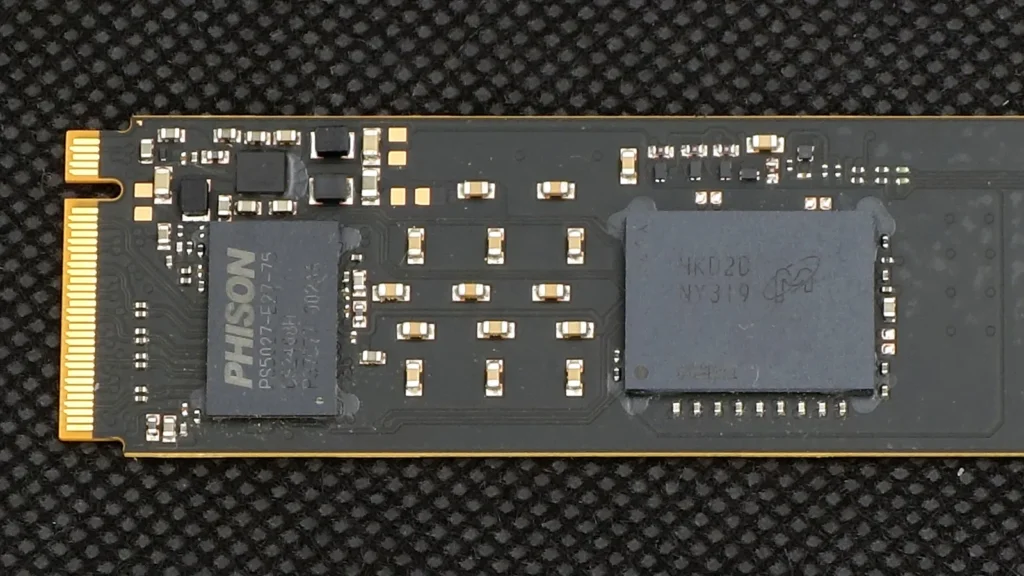
Speaking of the NAND, it’s a Quad-Level Cell (QLC) part that’s designed to minimize the number and size of the components needed to reach its capacities (currently 512MB, 1GB and 2GB). The extra layer makes QLC a third more dense than the Tri-Level Cell technology used in performance-focused drives like Crucial’s T705 (see our review), but that 1/3 increase in density comes at a 2/3 cost in endurance (measured in Terabytes Written). The controller tracks how often the drive’s cells have been overwritten, so that the “five -year” warranty should actually read “five years or 220TBW”. Owing to it having twice the number of cells, the 2TB model is rated at 440TBW.
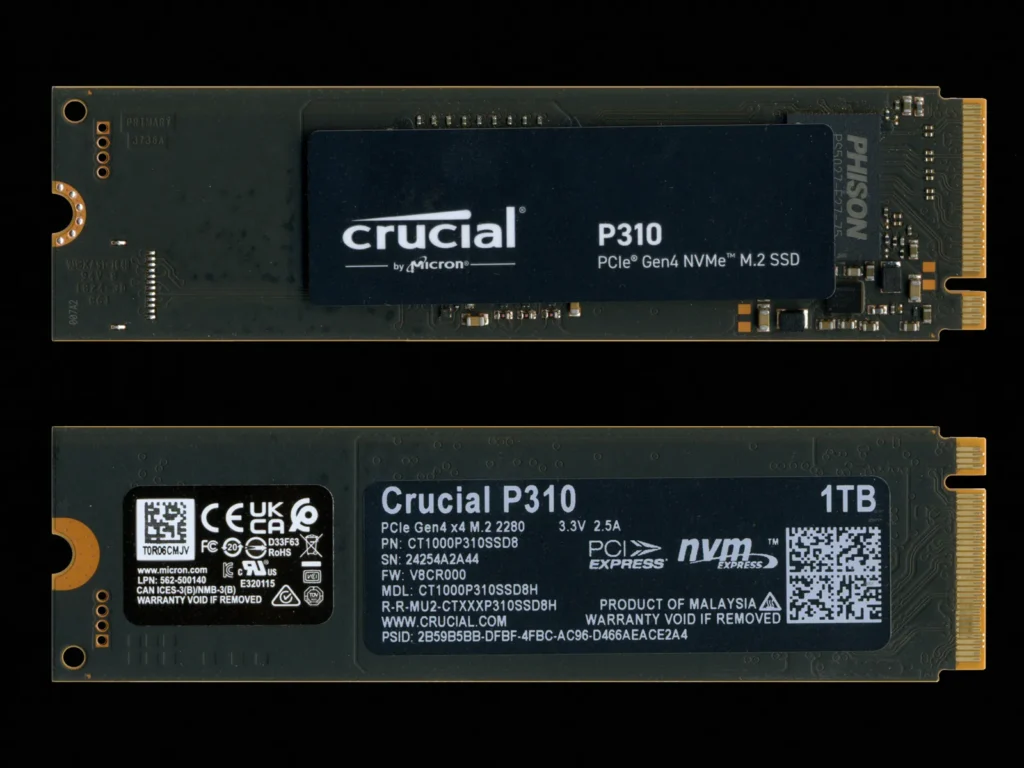
We won’t be rewriting this 1TB drive 220 times just to see how many of its cells die, but the controller would be telling us by then (via third party utilities) that the drive had reached the end of its warranty. It even dropped a full percent after simply loading it a couple times. Here’s a screen shot from one of those third-party utilities.

Yet 220 terabytes are probably more than most users will re-write to their drive over the useful life of whatever device they put it in, so we’ll move on to performance and value analysis.
| Test Hardware | |
| CPU | AMD Ryzen 9 7950X: 16C/32T 4.5-5.7 GHz, 64MB L3 Cache, Socket AM5 |
| CPU Cooler | Alphacool Core 1 Aurora, VPP655 with Eisbecher D5 150mm, NexXxoS UT60 X-Flow |
| Motherboard | ASRock X670E Taichi, Socket AM5, BIOS 1.11 (10-21-2022) |
| Graphics | Powercolor Red Devil Radeon 6750 XT: 2324-2623MHz GPU, 12GB GDDR6 |
| Power | be quiet! Dark Power Pro 10 850W: ATX12V v2.3, EPS12V, 80 PLUS Platinum |
| Memory | Lexar Thor OC DDR5-6000 2x16GB (32GB) CL32-38-38-96 1.30V |
Benchmark Results
The full-sized P310 comes out strong in Sandra’s overall disk score, falling just a hair behind the HP FX900 at the same capacity. It’s a good thing then that the P310 solidly trounces the old-tech drive in other metrics, as its price has recently dropped to a mere $65 at Newegg.
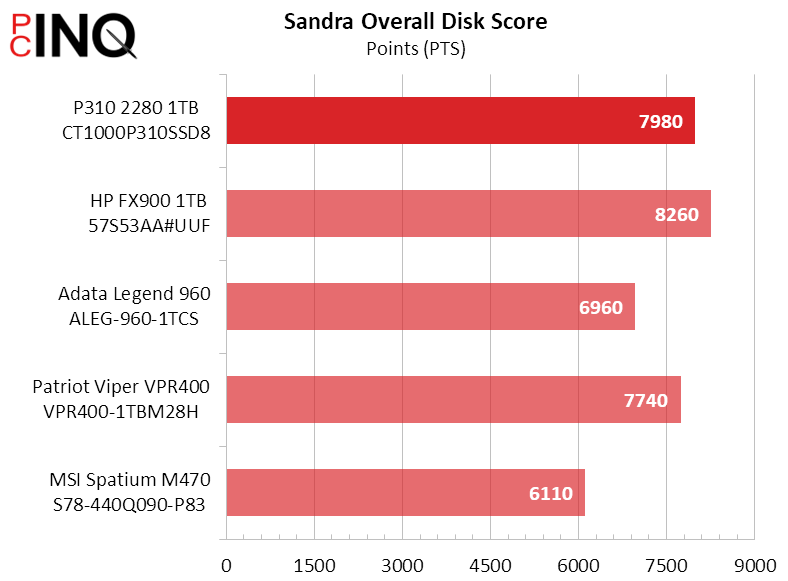

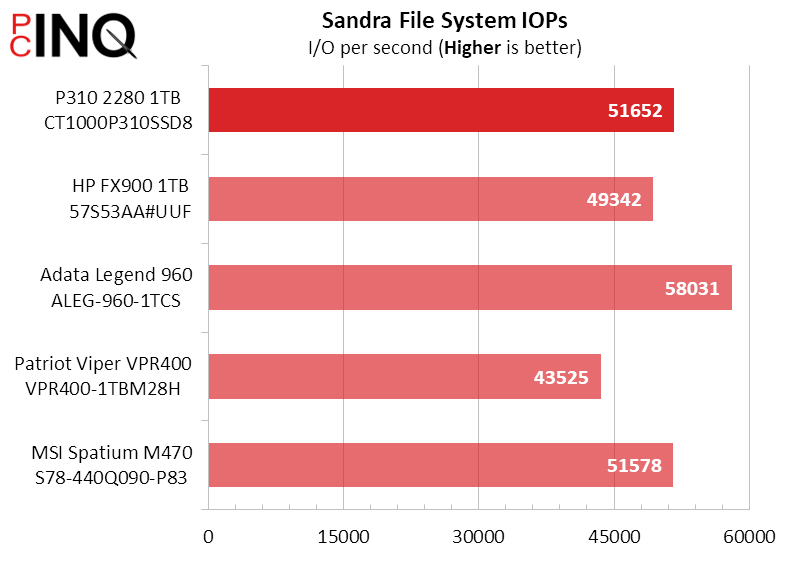
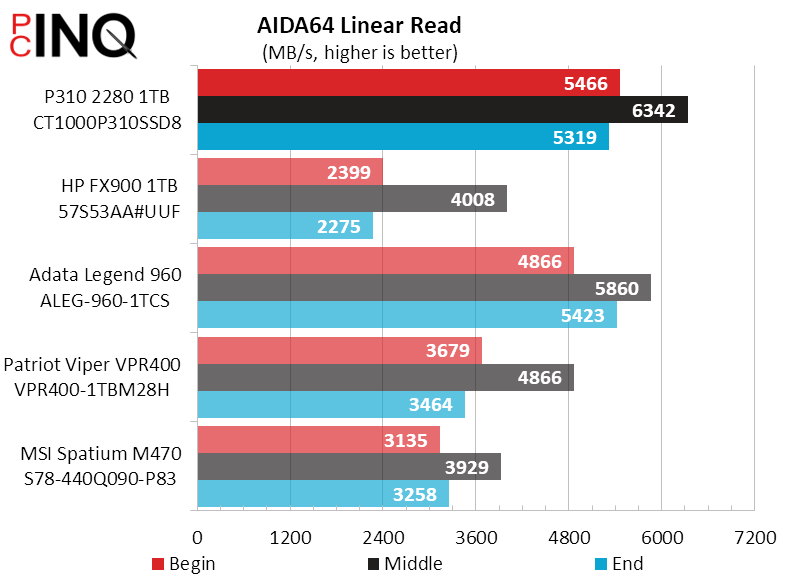

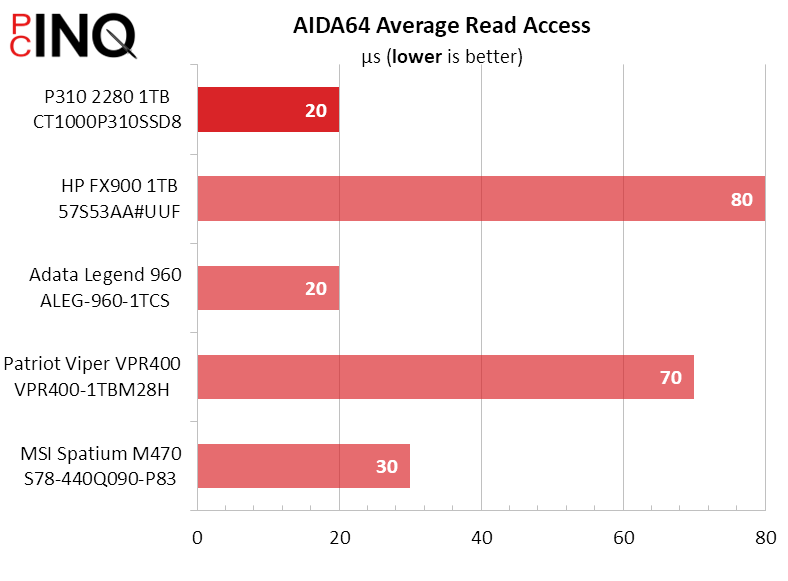
We grant Crucial that our 1TB comparison drives are getting a bit long in the tooth, but the two available drives both beat the 1TB version of Crucial’s P310 almost continuously through 3DMark and PCMark. The FX900 and Adata Legend 960 also carry far greater endurance ratings at 400TBW and 780TBW, respectively.
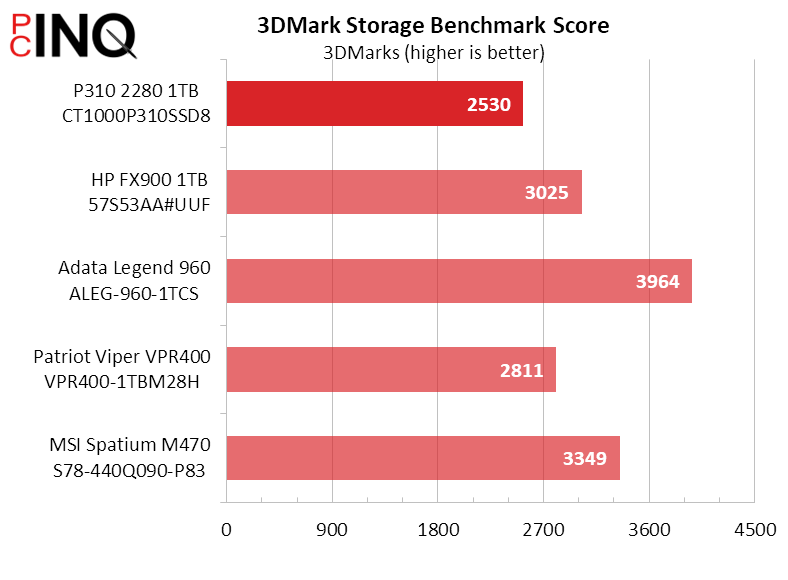

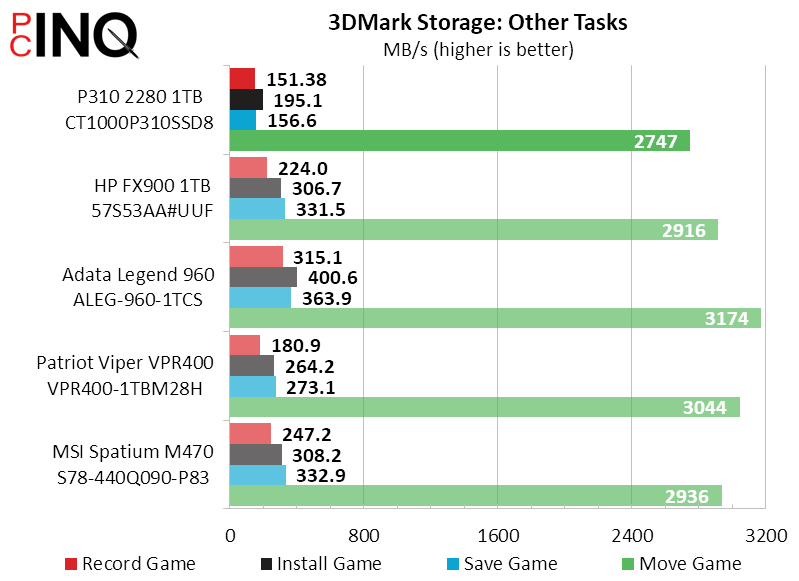
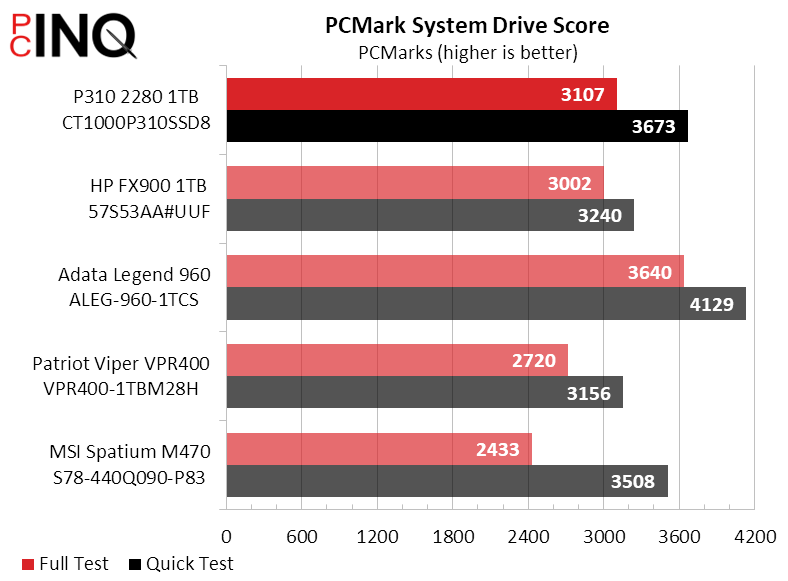
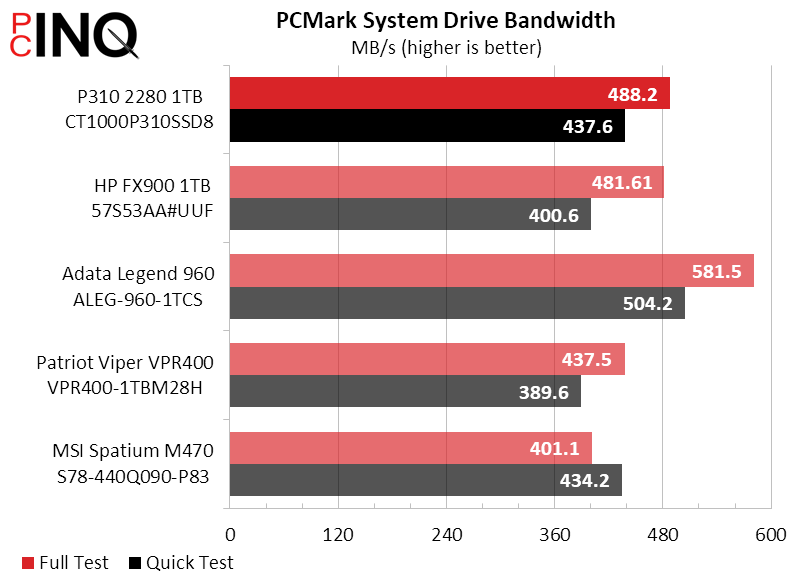
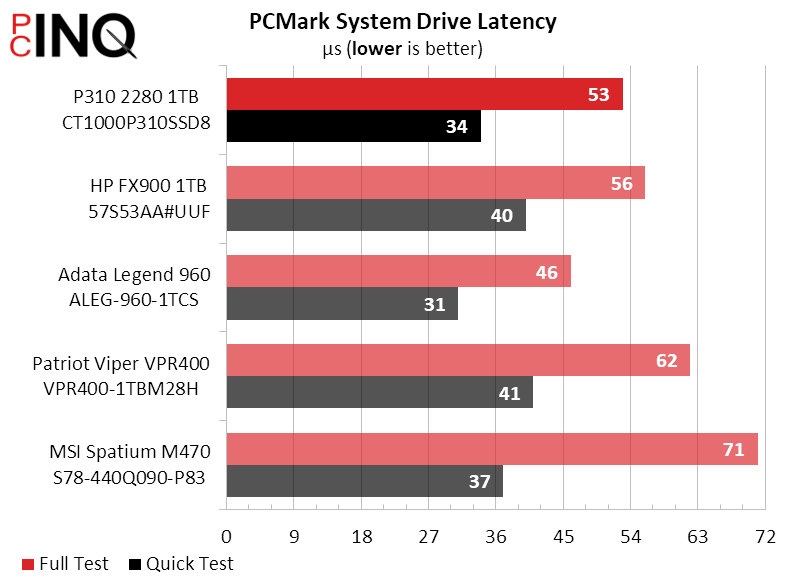
ATTO favors the P310 at 128K packet size, but the FX900 steals the show at 4K transfers. Things look better for the 1TB P310 in CrystalDiskMark, where it gets overtaken in only one test (latency) by only one drive (the Legend 960).

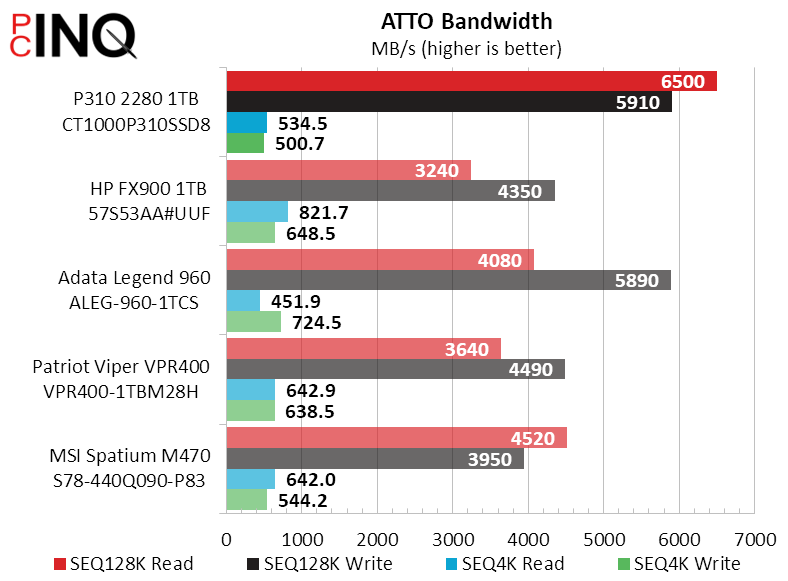

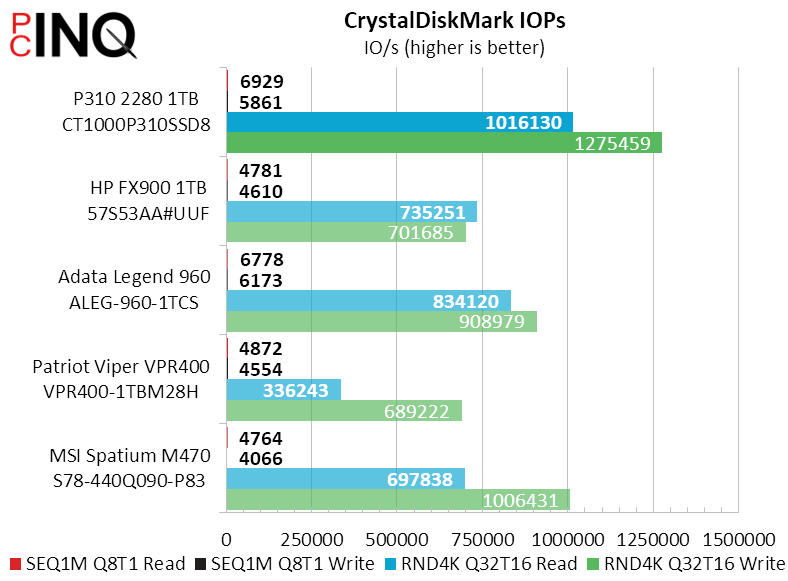
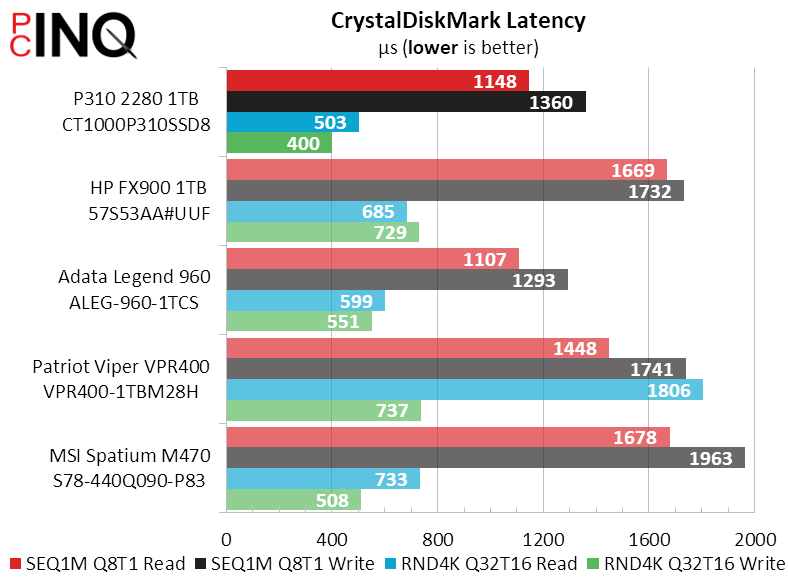
DiskBench stands on its own in our performance averages, so that the P310 1TB’s win here will weigh heavily there.
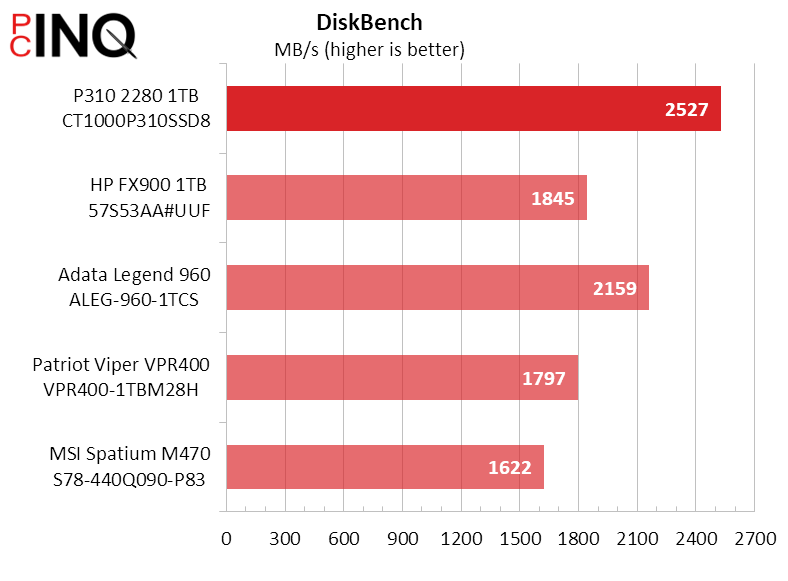
Even with all the weight of DiskBench behind it, the P310 take second place to the Legend 960 in overall performance.
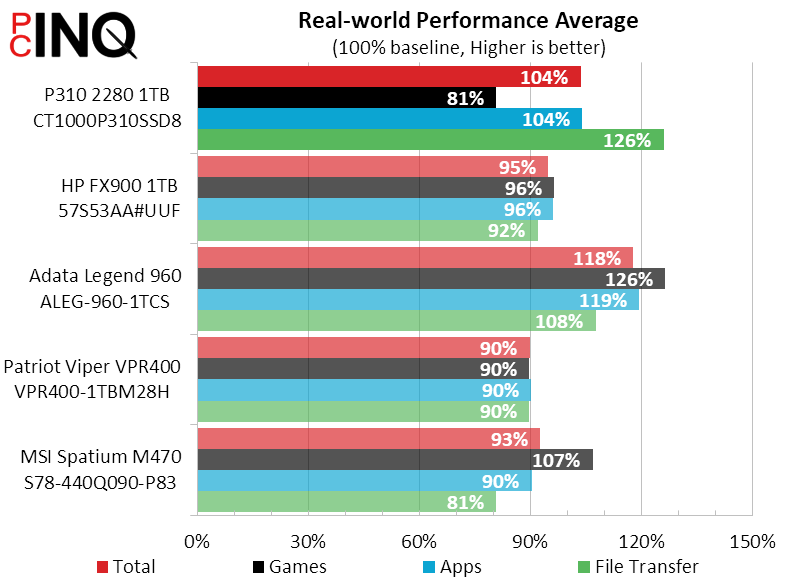
It might be low for a new drive, but the P310’s MSRP is pretty close to average when comparing older, depreciated models such as the FX900 and Legend 960 (we couldn’t even find remnant stock of the other two). Of those, the Legend 960 is both faster overall and over three times as wear-tolerant as the P310.

Crucial states that its P310 is nearly 40% more energy efficient compared to its own previous drive generation, but we never measured the power use of its previous generation so we really can’t say much about how it could extend your laptop’s battery life. And the P310 has come out at a great price. It’s too bad, then, that there are still enough earlier Gen4 drives floating around with similar or better performance and greater rated longevity that the new drive is forced to compete in the market against the devices that it already replaced at the manufacturing level.
| Crucial P310 1TB (CT1000P310SSD8) | |
| Pros | Cons |
| Second-fastest 1TB Gen4 drive Low release-day MSRP Five-year Warranty | Very short 220TBW rating |
| The Verdict | |
| Higher capacity for the price is the chief benefit of Micron’s latest 3D NAND, but it could struggle to gain a foothold with price-conscious enthusiasts for as long as the old stuff sticks around. | |
Find it at Amazon

(click for availability)
